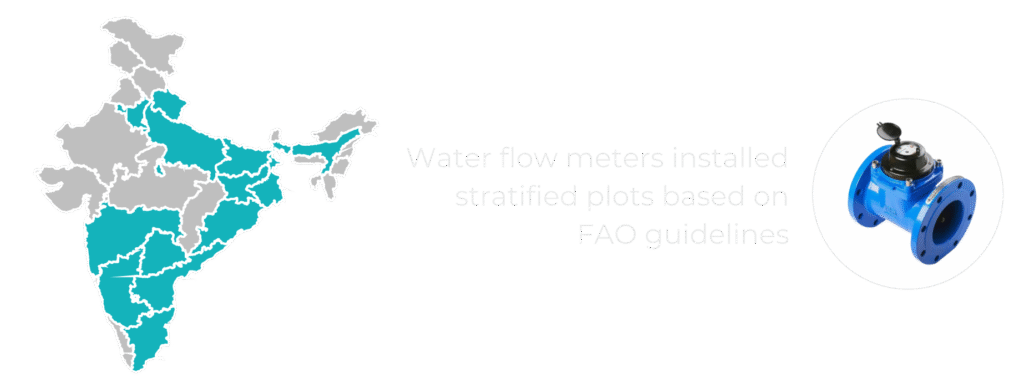Water conservation
Water conservation through smart farming practices
At the heart of our water conservation efforts, our dedicated Field Officers (FOs) closely monitor irrigation practices during regular field visits. Using the MRV application, they record irrigation counts, which serve as critical data points for evaluating water usage throughout both baseline and project seasons. Baseline data is gathered through conversations with farmers, based on their past recollections, while project season data is meticulously tracked during ongoing monitoring visits.
This comprehensive data allows us to calculate the precise amount of water saved during the project season compared to the baseline. One of the most effective strategies employed is Alternate Wetting and Drying (AWD) practices, which significantly reduce water consumption. AWD ensures that fields are irrigated only once the ponded water has naturally receded, effectively shortening the inundation periods and reducing water usage. As a result, water consumption can be reduced by up to 30%, leading to substantial savings.
Further amplifying our savings in applied water initiatives, we integrate the Direct Seeded method of rice cultivation, in select states in India, which completely replaces the traditional transplanting process. This method offers a transformative impact on water efficiency, as it eliminates the need for excessive water typically required for transplanting rice. Combined, AWD and Direct Seeded rice cultivation methods have led to an impressive annual water savings of approximately 12,53,000 million liters across 35,000 hectares — a significant environmental and operational benefit.

